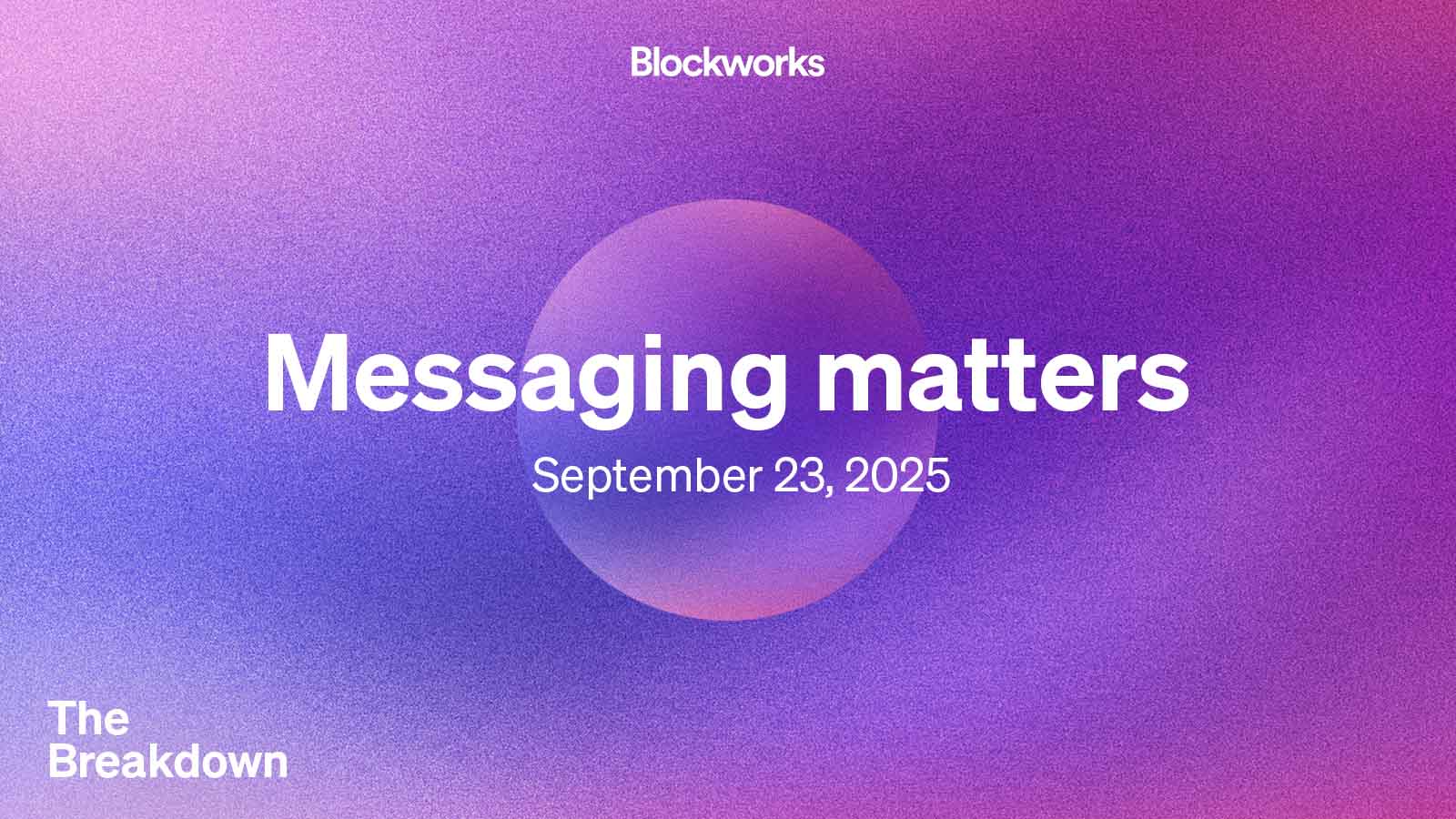Ethereum’s Elevator Pitch: Still in the Workshop Phase

Ethereum continues refining its core messaging while building the future of decentralized finance.
The Evolution Continues
Developers push forward with upgrades that enhance scalability and reduce transaction costs. Network improvements roll out steadily—bypassing traditional financial infrastructure entirely.
Market Position
Despite competition from newer blockchain platforms, Ethereum maintains its dominance in smart contract functionality. The ecosystem expands daily with new dApps and DeFi protocols launching.
Investment Perspective
Institutional adoption grows while retail investors chase the next big thing—because nothing says 'sound investment strategy' like following hedge fund momentum. The platform evolves beyond mere cryptocurrency into a global settlement layer.
Future Outlook
Ethereum's development roadmap promises greater efficiency and broader real-world applications. The network steadily builds toward becoming the foundation for Web3—whether traditional finance is ready or not.
Mixing messages
Over the years, investors have been given many ideas on why they should invest in Ethereum: the World Computer, digital oil, yield-bearing internet bond, ultra-sound money, the app store of crypto, the stablecoin chain.
None have really stuck, perhaps because they were often made at the same time — Clow’s five paper balls all in the air.
This weekend, Vitalik coined another: “low-risk defi.”
(Like in 1984, I will now go back and change every mention of “DeFi” in my newsletter archive to “defi.”)
Vitalik opens his latest blog post by acknowledging a “disjointness” in the ethereum community caused by the seemingly contradictory goals of creating revenue for token holders and keeping the chain neutral and decentralized.
Low-risk defi, he hopes, is the application that “fills both boxes at the same time.”
If so, it could helpfully synthesize Ethereum’s many competing narratives, as David Hoffman expects it will: “It’s all coming together now.”
Others are skeptical. Mert Mumtaz, for example, argues that Ethereum’s self-imposed technical limitations are incompatible with Vitalik’s emphasis on payments and financial inclusion: “You are not going to serve underserved populations on the L1 because it does not scale!”
From a marketing perspective, though, (and I think this is mostly about marketing), the risk is that the investment pitch for Ethereum might be getting even more disjointed.
“Low-risk defi” seems like a good elevator pitch to me — it differentiates Ethereum from both no-revenue Bitcoin and too-much-revenue Solana; it’s tangible enough to mean something and intangible enough to be open to interpretation; it’s simultaneously high- and low-minded.
But that kind of carefully balanced messaging might get drowned out by the digital asset treasury companies (DATs) that are now shaping the crypto narrative.
Joe Lubin says this is the express purpose of SharpLink Gaming, the DAT he chairs: “It’s about telling the Ethereum story.”
Unlike Vitalik, he’s telling that story with traditional investors in mind: “What does Wall Street pay attention to? It pays attention to being able to make money.”
Lubin tosses at least three paper balls in the air by pitching Ethereum as a productive asset, a monetary asset, and a “trust commodity.”
Tom Lee, chair of the other big Ethereum DAT, BitMine, adds stablecoins, RWAs and even AI agents into the messaging mix.
Clow WOULD probably lock them in a room and not let them out until they picked just one of these messages to pitch investors with.
DATs are more of a competition than a communal effort, however, and Tom Lee is currently winning: BitMine holds 2.15 million ETH to SharpLink’s 838,000.
This tells us something about the power of marketing: Joe Lubin, a co-founder of Ethereum, is attracting less attention from investors than Tom Lee, who is mostly known for pitching all kinds of things on CNBC.
The final outcome of this competition could have real consequences.
Lee, for example, thinks BitMine will have outsized influence in the development of Ethereum after it crosses a magical threshold of owning 5% of the supply of ETH.
That’s unlikely from a governance perspective, since no one “owns” the Ethereum network (not even ETH token holders).
But I suspect it will be from a messaging perspective — and messaging matters.
In that sense, a single DAT emerging with 5%+ of the ETH supply might actually help the investment case by simplifying the message that investors hear.
But the DATs themselves are already struggling to stay on message.
Tom Lee’s Ethereum DAT, for example, recently bought into a Worldcoin DAT, and a Solana DAT, DeFi Dev Corp., bought into a DAT that invests in the 0G token (which doesn’t exist yet).
When even the message makers can’t stay on message, how can investors be expected to keep up?
The obvious counterexample is Bitcoin, which has captured investors’ attention by offering a singular investment pitch: digital gold.
Bitcoin is more than that, of course.
I’d argue that it’s far more interesting as resistance money, for example.
Others think it’s the Lightning network that makes it interesting.
Fortunately, Lee Clow would probably tell you it can be all these things.
With his crumpled up paper balls, Clow wasn’t asking Jobs to eliminate four of the iMac’s five new functions — only to pick one to highlight.
Blockchains and DATs should do the same.
- The Breakdown: Decoding crypto and the markets. Daily.
- 0xResearch: Alpha in your inbox. Think like an analyst.
- Empire: Crypto news and analysis to start your day.
- Forward Guidance: The intersection of crypto, macro and policy.
- The Drop: Apps, games, memes and more.
- Lightspeed: All things Solana.
- Supply Shock: Bitcoin, bitcoin, bitcoin.

